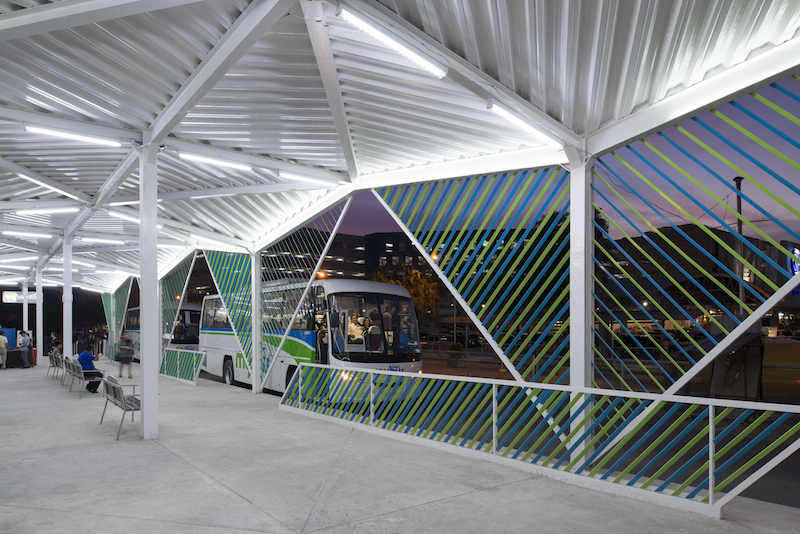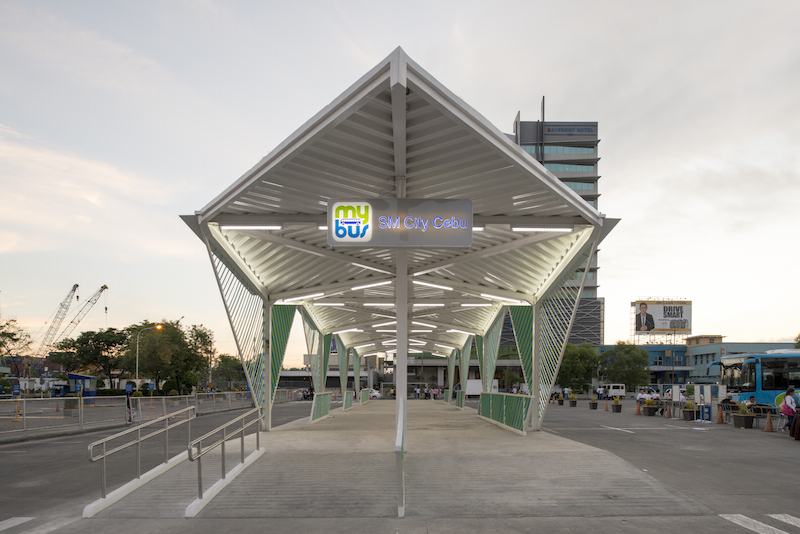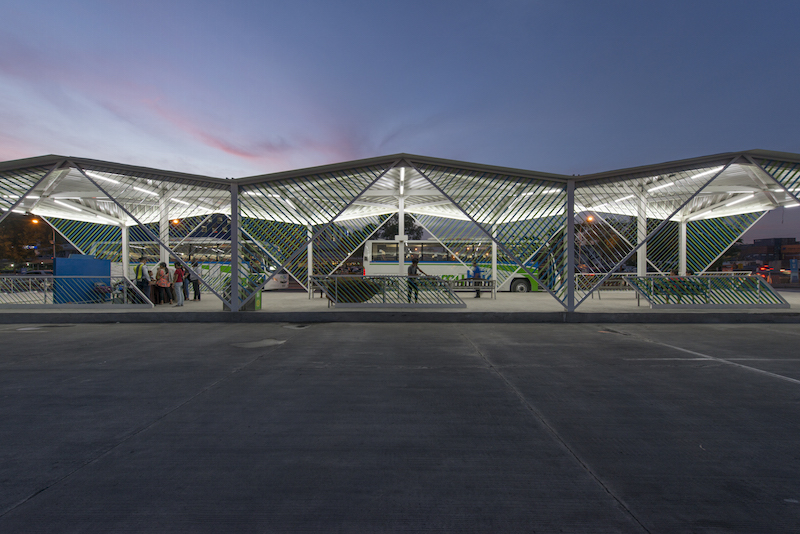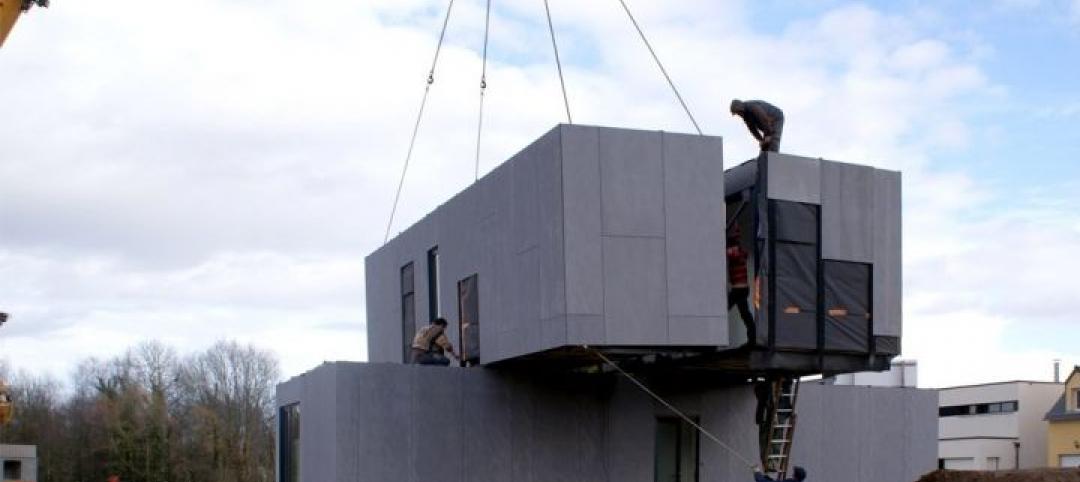By March of next year, Cebu, the oldest and second-largest city in the Philippines, should have its first bus rapid transit system (BTR) completed.
The system stretches from the Cebu International Airport to the city’s business district, and will connect four separately governed cities, BRT is expected to serve between 15% and 25% of the area’s 3.5 million population, and alleviate congestion for nearly one million citizens.
The 19 bus stations along the BRT’s route—five of which have been assembled and are operating—were designed by Brooklyn, N.Y.-based Carlos Arnaiz Architects (CAZA), a six-year-old firm with offices in Bogota, Colombia, and Manila, Philippines. Its Principal and Founder, Carlos Arnaiz, was born in the Philippines, and is a citizen of Colombia.
In an interview with BD+C, Arnaiz said that the decision to move forward on this project reflects how the Philippines is “reaping the benefits of good government” over the last several years, and has emerged as one fastest-growing economies in the region.
The BRT is a public-private partnership that includes the World Bank, the City of Cebu, and the real estate development firm SM Investments. About 3½ years ago, the World Bank commissioned a transportation study that WSP|Parsons Brinckerhoff completed about 18 months ago.
CAZA was brought on to design the bus stations as well as the surrounding street functions, such as lighting and benches, and road improvements. Arnaiz says that he analyzed the station design of systems serving other metros, including Bogota’s TransMilleno.
 The exterior design of the bus stations is a visual reminder of Cebu's reputation for basket weaving and rattan furniture. Image courtesy of CAZA
The exterior design of the bus stations is a visual reminder of Cebu's reputation for basket weaving and rattan furniture. Image courtesy of CAZA
“But our system is quite different, and we pretty much had to start from scratch,” he says.
CAZA designed four different station types, the components for each were made in a factory and are assembled onsite. The stations needed to be able to respond to Cebu’s two climate conditions—extreme heat and extreme rain. So CAZA designed the stations to provide shading and ventilation. It also angled the stations’ roofs and elevated their platforms slightly from street level to prevent flooding. (Stormwater is redirected into nearby retention tanks.)
“The biggest challenge was balancing the pragmatic with the need for cultural expression,” he says. Modular production and assembly were chosen for their affordability (the budget for this project is less than US$3 million) and performance. And the stations are architecturally connected to the city by the design of their louver screens that recalls Cebu’s renown for basket weaving, textiles, and furniture. (Curbed recently posted a story about this project with the headline “Bus Stops or Art Installation?”
Arnaiz hopes this project might lead to other transit-oriented work for his firm, which is currently involved in a hotel project in the Philippines and an office tower in Manila.
 The roof of the bus stops is angled to deflect the heavy rain that Cebu experiences. The stormwater is directed to retention tanks. Image courtesy of CAZA
The roof of the bus stops is angled to deflect the heavy rain that Cebu experiences. The stormwater is directed to retention tanks. Image courtesy of CAZA
Related Stories
Resiliency | Aug 19, 2021
White paper outlines cost-effective flood protection approaches for building owners
A new white paper from Walter P Moore offers an in-depth review of the flood protection process and proven approaches.
Resiliency | Jun 24, 2021
Oceanographer John Englander talks resiliency and buildings [new on HorizonTV]
New on HorizonTV, oceanographer John Englander discusses his latest book, which warns that, regardless of resilience efforts, sea levels will rise by meters in the coming decades. Adaptation, he says, is the key to future building design and construction.
Wood | Jun 10, 2021
Three AEC firms launch a mass timber product for quicker school construction
TimberQuest brand seeks to avoid overinvestment in production that has plagued other CLT providers.
Digital Twin | May 24, 2021
Digital twin’s value propositions for the built environment, explained
Ernst & Young’s white paper makes its cases for the technology’s myriad benefits.
Market Data | Feb 24, 2021
2021 won’t be a growth year for construction spending, says latest JLL forecast
Predicts second-half improvement toward normalization next year.
Modular Building | Jan 26, 2021
Offsite manufacturing startup iBUILT positions itself to reduce commercial developers’ risks
iBUILT plans to double its production capacity this year, and usher in more technology and automation to the delivery process.
Giants 400 | Dec 16, 2020
Download a PDF of all 2020 Giants 400 Rankings
This 70-page PDF features AEC firm rankings across 51 building sectors, disciplines, and specialty services.
AEC Tech | Dec 8, 2020
COVID-19 affects the industry’s adoption of ConTech in different ways
A new JLL report assesses which tech options got a pandemic “boost.”
Modular Building | Dec 2, 2020
The hidden cost of modular construction
For a building to be truly sustainable, it must maintain the three corners of the triangle paradigm throughout the building’s lifecycle.
Giants 400 | Aug 28, 2020
2020 Giants 400 Report: Ranking the nation's largest architecture, engineering, and construction firms
The 2020 Giants 400 Report features more than 130 rankings across 25 building sectors and specialty categories.




![Oceanographer John Englander talks resiliency and buildings [new on HorizonTV] Oceanographer John Englander talks resiliency and buildings [new on HorizonTV]](/sites/default/files/styles/list_big/public/Oceanographer%20John%20Englander%20Talks%20Resiliency%20and%20Buildings%20YT%20new_0.jpg?itok=enJ1TWJ8)












